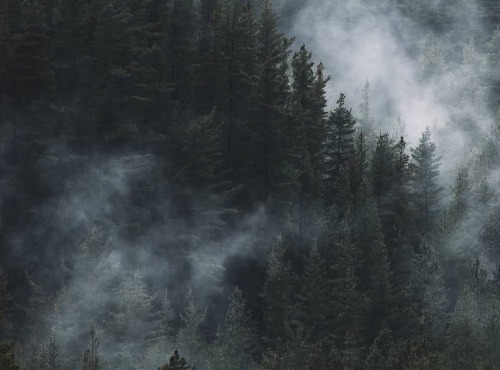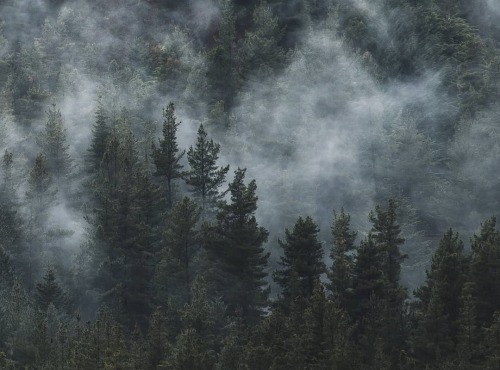Most People Don’t Realize That Conventional Dairy Already Has Been Focused On Sustainability, We Just
Most people don’t realize that conventional dairy already has been focused on sustainability, we just don’t advertise
- We sequester carbon with the crops growing for the cows
- We use organic fertilizer from the cows instead on relying on synthetic fertilizers
- We recycle all our water to grow crops for the cows
- Cows up-cycle food byproducts into usable nutrition that would otherwise go to a landfill
Cows are a valuable part of the earths ecology and ecosystems. Many dairy farms today are installing methane digesters- that take cow manure, capture the emissions, and make renewable power. Installing these systems make dairies carbon negative meaning they are taking out more emissions than they are creating.
More Posts from Blakezimmermanhouston and Others

The increasing amount of plastic being added to our environments has created intense selection pressure for microbes that can break down plastic for energy.
Looking at environmental DNA samples, researchers have found 30,000 different enzymes capable of digesting different types of plastic. Almost 60% did not fit into any known enzyme types.
While previous plastic-eating microbes had primarily been found in garbage dumps or recycling plants (locations with very high levels of plastic), the enzymes in this study were collected from soil and ocean water throughout the world, meaning this phenomenon is even more widespread than we thought.
The goal is to utilize these enzymes for more efficient recycling–essentially breaking plastic down into its basic building blocks to reduce or even eliminate the need for new virgin plastic. An enzyme created in 2020 is already being used to recycle plastic bottles in only a couple of hours.
Thanks to the anonymous individual who sent this in!

Think twice before you adopt the belief that we live on a planet of scarcity. Abundance exists! My solarpunk novel called The Carbon Coast is set in a future where renewable energies are everywhere and the planet has a chance to breathe. Why am I imagining this future?
Because we can replace fossil fuels with renewable, abundant energy. It will cause growing pains, but we have to make this change, and I hope my novel will inspire people to believe in that future
follow @thecarboncoast for more posts like this and info about the novel








If you’ve been trying to go plastic free for awhile you’ve probably accumulated quite a few jars some way or another. I often buy in jars and will keep them for upcycling, but sometimes I run out of ideas on how to reuse them. These are some good ways to repurpose those jars. In addition to these some zero waste stores will take cleaned jars for people who don’t have containers but are looking for a refill. While some of these are exclusively for glass, some of these ideas work for plastic containers too! Happy upcycling!
photo credit to zerowastenerd on instagram






Blake Zimmerman of Houston, Texas discusses what Liquefied Natural Gas is, how it’s created, and why it’s an essential export for the United States.



Morning Mists ♥
National Park Laguna del Laja, Antuco, Chile.

Percentage of electricity produced by renewable sources, by US state.








Blake Zimmerman of Houston, Texas explains microgrids and the use of them to promote sustainability. https://blakezimmermanhouston.net/
-
 standardfareliferotica liked this · 9 months ago
standardfareliferotica liked this · 9 months ago -
 wildfeather5002 liked this · 1 year ago
wildfeather5002 liked this · 1 year ago -
 thetanyapotter reblogged this · 2 years ago
thetanyapotter reblogged this · 2 years ago -
 thetanyapotter liked this · 2 years ago
thetanyapotter liked this · 2 years ago -
 irlpretear reblogged this · 2 years ago
irlpretear reblogged this · 2 years ago -
 milkfreaker reblogged this · 2 years ago
milkfreaker reblogged this · 2 years ago -
 milkfreaker liked this · 2 years ago
milkfreaker liked this · 2 years ago -
 polkub liked this · 2 years ago
polkub liked this · 2 years ago -
 flutteringinflight liked this · 2 years ago
flutteringinflight liked this · 2 years ago -
 theadveragecanadian liked this · 2 years ago
theadveragecanadian liked this · 2 years ago -
 rusticmune liked this · 2 years ago
rusticmune liked this · 2 years ago -
 caeseum-deus liked this · 2 years ago
caeseum-deus liked this · 2 years ago -
 blu3r liked this · 2 years ago
blu3r liked this · 2 years ago -
 deprravityy liked this · 2 years ago
deprravityy liked this · 2 years ago -
 manateebety liked this · 2 years ago
manateebety liked this · 2 years ago -
 theapostlejodifoster reblogged this · 2 years ago
theapostlejodifoster reblogged this · 2 years ago -
 theapostlejodifoster liked this · 2 years ago
theapostlejodifoster liked this · 2 years ago -
 sakurastallion liked this · 2 years ago
sakurastallion liked this · 2 years ago -
 idee-montijo liked this · 2 years ago
idee-montijo liked this · 2 years ago -
 irlpretear reblogged this · 2 years ago
irlpretear reblogged this · 2 years ago -
 ancient-naturalhistories reblogged this · 2 years ago
ancient-naturalhistories reblogged this · 2 years ago -
 modernhistorybooks reblogged this · 2 years ago
modernhistorybooks reblogged this · 2 years ago -
 jackiecoyote reblogged this · 2 years ago
jackiecoyote reblogged this · 2 years ago -
 agriculturelogos liked this · 2 years ago
agriculturelogos liked this · 2 years ago -
 carideatheecreative liked this · 2 years ago
carideatheecreative liked this · 2 years ago -
 princess-puppyboy reblogged this · 2 years ago
princess-puppyboy reblogged this · 2 years ago -
 princess-puppyboy liked this · 2 years ago
princess-puppyboy liked this · 2 years ago -
 jillyjillyhillbilly liked this · 2 years ago
jillyjillyhillbilly liked this · 2 years ago -
 mickey-the-doll reblogged this · 2 years ago
mickey-the-doll reblogged this · 2 years ago -
 mickey-the-doll liked this · 2 years ago
mickey-the-doll liked this · 2 years ago -
 violet-ram liked this · 2 years ago
violet-ram liked this · 2 years ago -
 iw9q8q7ysysy reblogged this · 2 years ago
iw9q8q7ysysy reblogged this · 2 years ago -
 iw9q8q7ysysy liked this · 2 years ago
iw9q8q7ysysy liked this · 2 years ago -
 littledemonlorne reblogged this · 2 years ago
littledemonlorne reblogged this · 2 years ago -
 furbearingbrick reblogged this · 2 years ago
furbearingbrick reblogged this · 2 years ago -
 sayanrougshaban liked this · 2 years ago
sayanrougshaban liked this · 2 years ago -
 chachaaaacha liked this · 2 years ago
chachaaaacha liked this · 2 years ago -
 bite-to-break reblogged this · 2 years ago
bite-to-break reblogged this · 2 years ago -
 backintheattic liked this · 2 years ago
backintheattic liked this · 2 years ago -
 redredbrick liked this · 2 years ago
redredbrick liked this · 2 years ago -
 innko liked this · 2 years ago
innko liked this · 2 years ago -
 acegodzilla liked this · 2 years ago
acegodzilla liked this · 2 years ago -
 lights-on-nobodys-home reblogged this · 3 years ago
lights-on-nobodys-home reblogged this · 3 years ago -
 lights-on-nobodys-home liked this · 3 years ago
lights-on-nobodys-home liked this · 3 years ago -
 crowgxng liked this · 3 years ago
crowgxng liked this · 3 years ago
Blake Zimmerman, of Houston, TX, is a senior sales executive for Enchanted Rock LTD. A proud alumnus of Texas A&M, Blake has always been able to focus on a problem and come up with an effective solution. Throughout his highly successful career, Blake has utilized his passion and knowledge for application engineering, PetroChem, Plastics, and system design.
41 posts